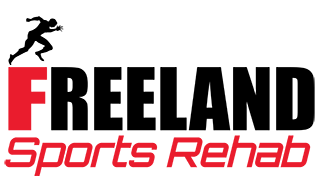Traditional Chinese Medicine, TCM, can treat many health issues. While Chinese Medicine is well known for pain relief, there is so much more it can do. Improved fertility, digestive disorders, allergies/sinus infections and stress relief, are just a few of the problems that can be addressed with Chinese Medicine.
Lets go over some basics. Chinese Medicine encompasses more than just Acupuncture.
It also includes Cupping, Moxabustion, and Chinese Herbal Medicine. Here is a brief description of each.
“Acupuncture – Acupuncture is the insertion of very fine needles into specific points on the body. For thousands of years, practitioners of TCM have mapped out your body’s 12 main meridians, pathways that carry Qi (vital life energy pronounced ‘chee’) throughout your body.”
Each meridian is connected to one specific organ, or group of organs, that govern particular bodily functions. Acupuncture points are located along these meridians and, when needles are inserted, they promote your body’s healing abilities by regulating the flow of Qi through these meridians. When Qi flows freely, well-being is restored.
Yin and yang is also essential to understanding Traditional Chinese Medicine. It’s all about balance and when I insert needles at the correct points, balance is restored to your body. If you have a chronic problem, several treatments maybe required. If your problem is acute, a couple appointments may do the trick.
“Chinese Herbal Medicine – Herbal medicine is the use of plants, flowers and minerals for healing. Herbs are highly specific in their actions and possess diverse qualities and properties that target different aspects of an ailment. Herbs are classified as hot or cold, bitter or sweet, and more. When your illness is warmer in nature, cooling herbs are appropriate.”
As an example, let’s take the common cold. Your cold may have heat signs, such as fever, yellow phlegm and a sore throat. So, your herb formula would include herbs of a colder nature to clear the heat from you. From this simple example, you can see how herbal formulas have to be specifically tailored to the individual needs of each patient.
Herbs come in many forms, most popularly pills and teas. When used correctly under the guidance of your TCM practitioner, they are generally safe and rarely have side effects.
“Cupping – Cupping is an ancient technique that involves placing jars on the skin, suctioning out the air and creating a vacuum. The underlying tissue is raised, or sucked, partway into the cup. The purpose of cupping is to enhance circulation, help relieve pain, remove “heat,” and pull toxins from your body’s tissue.”
“Moxabustion – This technique involves burning the herb known as mugwort a safe distance from the skin to warm an acupuncture point. The Moxa plant, in Chinese is called Ai Ye and is made from the wool of the Mugwort plant.”
Moxa creates a comfortable sensation of heat. It helps warm the meridians, opens channels, regulates Qi and blood flow in the body, expels cold and dampness and warms the uterus. There are many forms of moxa. It can be a stick, used atop a needle or used in conjunction with ginger or a moxa bowl. Moxa is Yang in nature and is therefore used mainly to restore deficient Yang conditions.
Some of the main disorders treated with Moxa include; asthma, diarrhea, rheumatic pain, abdominal pain, vomiting, certain gynecological disorders (it is often used to improve fertility), and any kind of pain due to cold or deficiency.
What would you like to know about Chinese Medicine ? Schedule an appointment today!


